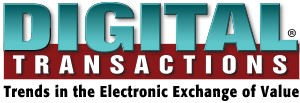It’s Time for An Alternative to BNPL or Cards.

There certainly have been some interesting developments in the Buy Now Pay Later (BNPL) marketplace lately, including the BNPL provider credit card mentioned in our last blog, and the launch of the “WikiPink” site to dispel any less-than-desirable contentions about the use of this online financing method. Take a look at FuturePay CEO Tim Harris’ column, which appeared in Digital Transactions magazine on June 1. It positions Digital Revolving Credit as a preferable alternative to both traditional credit card accounts and BNPL.

Digital Revolving Credit: It isn’t a credit card and it isn’t BNPL. Instead, it’s the best of both worlds.
As a provider of e-commerce financing solutions, we’ve watched with interest the latest calls for buy now, pay later (BNPL) transparency. We’ve also often seen this method of installment lending compared to traditional credit cards, whose application process involves credit checks that help consumers avoid excessive debt.
Wouldn’t it be ideal, though, if consumers had an alternative to both BNPL and conventional credit cards?
When it comes to e-commerce financing, digital revolving credit offers similar convenience, but with more flexibility to accommodate consumers’ budgets in a still-volatile economy.
Digital revolving credit seems to have garnered far less recognition, yet it offers many of the conveniences of both BNPL and credit cards—without the same consumer pitfalls. It could be viewed as a happy medium between the convenience of credit cards and the more structured, short-term payment programs required by BNPL providers.
Since a digital revolving account can stay open indefinitely, the business goals of this method align with those of the merchant, fostering long-term customer relationships. Both the e-commerce merchant and the financing provider thrive when purchasers maintain their accounts over extended periods of time.
Developing these shoppers into repeat customers who will reuse their credit for ongoing purchases is a significant achievement.
This is because happy, long-term customers develop brand loyalty in the process. By contrast, a short-term BNPL installment loan account terminates the customer relationship after the transaction is paid off.
Under Scrutiny
A digital revolving credit account is also far easier for consumers to manage. First, borrowers are not bound to a rigid fixed payment schedule, as they are with BNPL. Users can choose to spread their payments over time, making smaller monthly payments across an extended period.
Customers tend to be more comfortable when they have increased flexibility in how they make payments on their accounts, allowing them to exert greater control over their finances.
BNPL applicants generally aren’t subject to a hard credit pull, removing some of the protections that exist to keep borrowers out of debt problems. At the same time, digital revolving credit accounts are subject to the same regulations and credit underwriting that are common with traditional credit card programs.
Since an open-ended, revolving account allows customers to reuse their credit line, it’s also easier for shoppers to keep track of multiple purchases over time, since transactions are consolidated in a single account.
BNPL providers have come under scrutiny of late in this area, since consumers have opened multiple individual installment loans simultaneously, financing everything from groceries to utility bills.
This has been seen particularly with younger consumers who have avoided the credit cards of their parents’ era in favor of newer electronic methods. But when used without strict financial discipline, the BNPL repayment process can become overwhelming, making it easier for consumers to fall behind.
More Flexible
A more flexible payment schedule can also be a better option in an inflationary economy. In this scenario, ordinarily reliable consumers with steady incomes and stable credit histories can find themselves with reduced cashflow.
In these instances, customers who use digital revolving credit can adjust their payments to fit their budgets until their financial situations change. By contrast, BNPL loan payment schedules offer no such flexibility—and can hit borrowers with costly late fees if those users can’t live up to their commitments.
As much as Gen Z and Millennial consumers have tried to avoid the credit cards of their parents’ generation, the misuse of BNPL shows they might need more accommodating financing alternatives. Digital revolving credit enables these younger shoppers—and the rest of the buying public—to take advantage of a more flexible, easier-to-manage e-commerce financing option—one that’s designed to help them remain viable, long-term customers.
—Tim Harris is chief executive of FuturePay Holdings Inc.